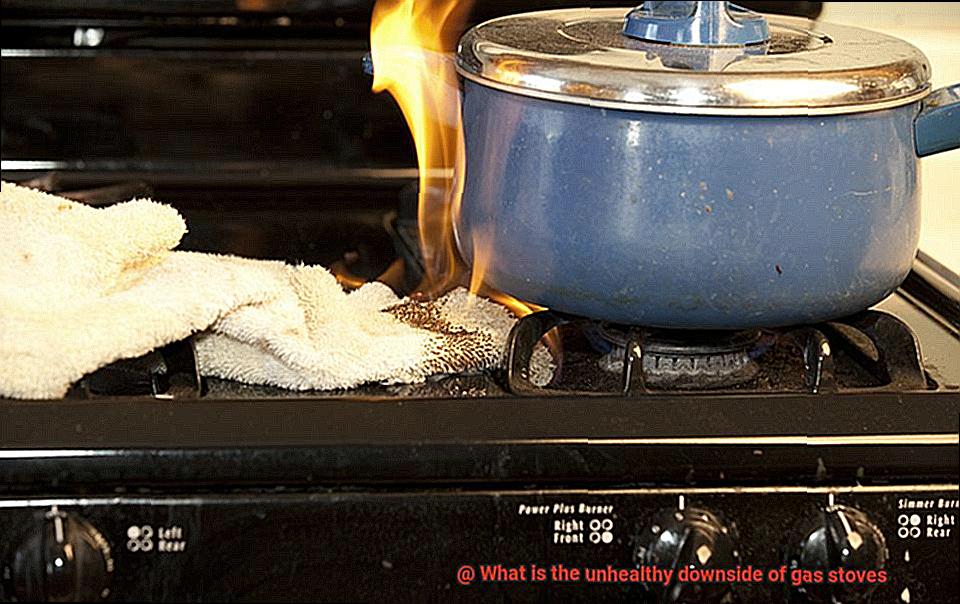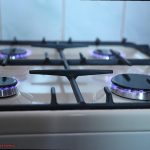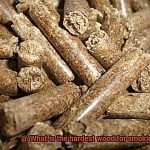Have you ever considered the potential health hazards that come with using gas stoves, the go-to cooking appliance in most households? Although they are convenient and practical, there is an unhealthy downside that many people are unaware of.
Every time you turn on your burner, harmful substances such as nitrogen dioxide, carbon monoxide, and formaldehyde are released into your home. Shockingly, indoor levels of nitrogen dioxide from gas stoves are forty to fifty times higher than outdoor levels.
The consequences of exposure to these substances can range from minor respiratory issues and headaches to severe illnesses like cancer. Children are particularly vulnerable due to their still-developing respiratory systems.
If you’re worried about the potential risks associated with gas stoves, don’t fret. There are simple steps you can take to protect yourself and your family. Stay tuned to learn more about the unhealthy downside of gas stoves and discover ways to minimize exposure to harmful substances.
Contents
What are Gas Stoves?
Gas stoves are a versatile and convenient kitchen appliance that has become a staple in many households. They are powered by natural gas or propane and are preferred over electric stoves because of their quick heating and precise temperature control. Gas stoves come in two types: freestanding and built-in models, and they are commonly found in homes, restaurants, and other commercial kitchens.
The basic design of a gas stove consists of burners that are located on a cooktop surface above the oven. The burners are ignited by turning a knob or pressing an ignition button, which releases a small amount of gas into the burner. A flame is then sparked that ignites the gas and produces heat. Gas stoves offer faster heating times, more precise temperature control, and lower energy costs than electric stoves.
However, gas stoves also come with some potential risks that users should be aware of. One of the most concerning downsides is that gas stoves can release harmful pollutants into the air. Burning gas produces nitrogen dioxide, carbon monoxide, and fine particulate matter that can cause respiratory problems, heart disease, and even cancer with long-term exposure. Proper ventilation is essential to reduce exposure to these pollutants.
Another potential risk associated with gas stoves is the danger of gas leaks. Gas leaks can occur if the stove is not installed correctly or if there is damage to the gas line or connections. Gas leaks can lead to explosions or fires and can cause serious injury or death. Therefore, it’s important to have your gas stove installed by professionals and check for gas leaks regularly.
Despite these risks, gas stoves remain a popular choice for cooking enthusiasts because of their speed, precision, and cost-effectiveness. They are also considered to be more environmentally friendly than electric stoves because they produce fewer greenhouse gases during operation.
The Unhealthy Downsides of Gas Stoves
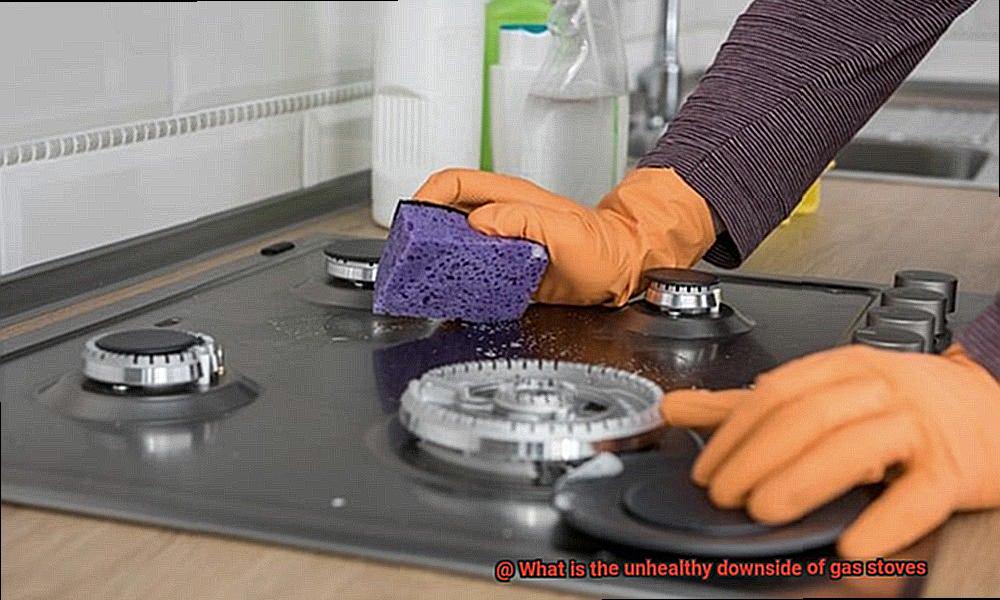
Gas stoves have long been a popular choice for cooking in households worldwide, touted for their convenience and efficiency. However, recent studies have exposed the unhealthy downsides that many people may not be aware of.
The primary concern associated with gas stoves is their impact on indoor air quality. When gas stoves are used, they release a vast number of pollutants into the air, including nitrogen dioxide, carbon monoxide, and formaldehyde. These contaminants can cause respiratory problems and exacerbate existing conditions such as asthma, putting your health at risk without you even realizing it.
In addition to this, gas stoves have the potential to produce harmful levels of particulate matter, a type of air pollutant that can enter the lungs and cause severe health problems such as lung cancer and heart disease. Gas stoves have been found to produce high levels of particulate matter, especially when used for high-heat cooking methods like frying or broiling.
But it’s not just our health that’s at risk; gas stoves also contribute to climate change. Burning natural gas releases carbon dioxide and other greenhouse gases into the atmosphere, exacerbating global warming. By using a gas stove, you’re adding to the larger environmental crisis we’re facing.
So what can we do? It’s essential to be aware of these downsides and consider alternatives such as electric or induction cooking methods. Making small changes in our daily lives can help reduce our exposure to harmful pollutants and contribute to a healthier planet for future generations.
Nitrogen Dioxide and Carbon Monoxide
Gas stoves are a common appliance in kitchens worldwide, but their hidden dangers have come to light through recent studies.
Let’s start by exploring nitrogen dioxide (NO2), a highly reactive gas that can cause respiratory problems, particularly in people with asthma or other respiratory illnesses. NO2 can irritate the lungs, leading to coughing, wheezing, and shortness of breath. Long-term exposure to NO2 can result in chronic bronchitis and other respiratory diseases. This means that families with young children or elderly members should take extra caution when using gas stoves.
Now, let’s discuss carbon monoxide (CO), a colorless and odorless gas produced when natural gas or propane burns incompletely. CO is extremely toxic, and even inhaling small amounts can lead to symptoms like headaches, dizziness, nausea, and confusion. High levels of CO can be fatal, making it crucial to have a working carbon monoxide detector in your home.
Fortunately, there are several ways to reduce your exposure to these harmful gases. Firstly, ensure your kitchen is well-ventilated by opening a window or turning on a fan. Proper ventilation helps circulate air and prevent the buildup of harmful gases. In addition, consider switching to an electric stove or cooktop as they don’t emit any harmful gases.
If you choose to continue using a gas stove, make sure it’s properly maintained and regularly serviced to ensure it’s burning fuel efficiently and producing as little harmful emissions as possible. Proper maintenance also ensures the safety of your appliance.
Fine Particulate Matter (PM)
These tiny particles are invisible to the naked eye, but they can have serious consequences if inhaled over a long period of time.
PM is a mixture of solid and liquid particles, including dust, dirt, smoke, and soot. When gas stoves are used, they release nitrogen dioxide (NO2) and carbon monoxide (CO) into the air, which combine with other pollutants in the atmosphere to form PM. Once inhaled, these particles can penetrate deep into the lungs and even enter the bloodstream, causing inflammation and damage to vital organs.
The Environmental Protection Agency (EPA) warns that exposure to fine particulate matter can lead to respiratory and cardiovascular issues. This is particularly alarming for those who spend extended periods indoors, such as children, elderly individuals, and those with respiratory or cardiovascular conditions.
Studies have found that cooking with gas stoves can increase indoor concentrations of PM by up to 50 percent. This is a significant amount, which underscores the importance of taking proactive measures to reduce exposure.
To minimize your exposure to PM from gas stoves, it is recommended to use ventilation systems that exhaust air outside of the home. This may include range hoods and exhaust fans. Additionally, it’s crucial to regularly clean your gas stove and ensure that it is properly installed and maintained.
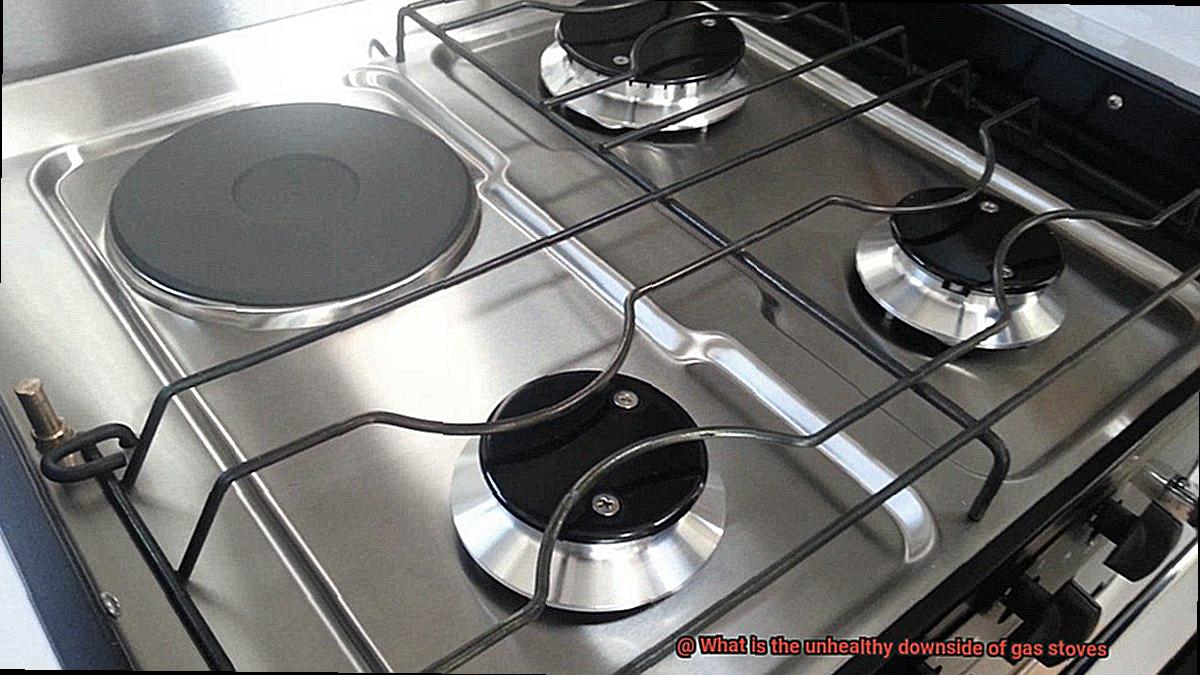
Volatile Organic Compounds (VOCs)
VOCs are harmful chemicals that can have serious health consequences when inhaled in large quantities. Some of the most common VOCs released during cooking include benzene, formaldehyde, and acrolein.
Benzene is a known carcinogen and has been linked to leukemia. Formaldehyde can irritate the eyes, nose, and throat, and is also a known carcinogen. Acrolein can cause respiratory problems and eye irritation. These compounds are not only released during cooking, but they can also be emitted when turning on or off the gas stove. This means that they can accumulate in the air, leading to poor indoor air quality.
Unfortunately, some people are more vulnerable to the harmful effects of VOCs than others. Children, the elderly, and people with respiratory problems are particularly at risk. Exposure to these compounds can lead to headaches, nausea, dizziness, and other health problems.
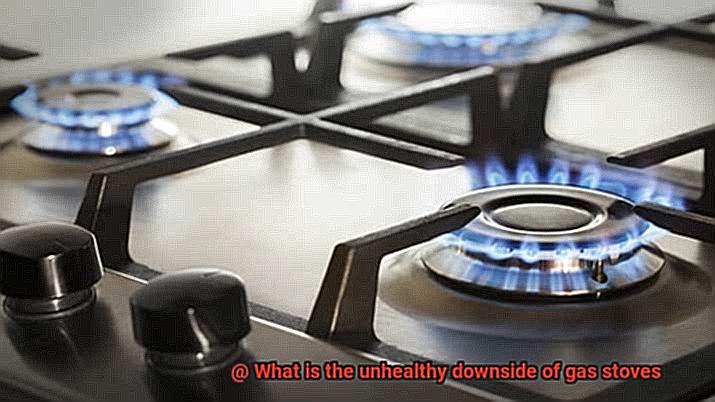
So what can you do to minimize your exposure to VOCs? Firstly, it is recommended that you use a range hood that vents outside when cooking on a gas stove. A range hood can help to draw out the pollutants and prevent them from accumulating in the air. Additionally, regular cleaning of the stove and maintaining good ventilation in the kitchen can also help reduce the levels of these harmful compounds.
Here are some other tips to reduce your exposure to VOCs:
- Use a gas stove with an automatic shut-off feature.
- Avoid using the broiler or oven’s self-cleaning function.
- Choose non-toxic cleaning products.
- Open windows when cooking.
- Use an air purifier with a HEPA filter.
It’s important to prioritize your health by taking proactive measures to reduce your exposure to VOCs. By using proper ventilation techniques, keeping your gas stove clean and well-maintained, and taking other precautions, you can significantly reduce your risk of developing health problems associated with VOCs.
Health Risks Associated with Gas Stoves
Gas stoves are ubiquitous in many homes, and while they may be convenient, they also pose health risks. The efficiency of gas stoves can lead to the release of harmful pollutants that can have detrimental effects on respiratory health.
One of the primary pollutants that gas stoves emit is nitrogen dioxide (NO2). This respiratory irritant can cause coughing, wheezing, and shortness of breath. Long-term exposure to NO2 can lead to chronic bronchitis, asthma, and other respiratory diseases. Carbon monoxide (CO) is another harmful pollutant that can be released by gas stoves. This odorless gas can be deadly in high concentrations, with symptoms of poisoning including severe headache, dizziness, nausea, and fatigue. Long-term exposure to low levels of CO can also cause neurological problems and other health issues.
In addition to NO2 and CO, gas stoves can also release particulate matter (PM), a mixture of small particles and liquid droplets that can penetrate deep into the lungs and cause respiratory problems. Exposure to PM has been linked to asthma, lung cancer, and other health issues.
To minimize the health risks associated with gas stoves, adequate ventilation in the kitchen is essential. Ensuring proper air circulation by using an exhaust fan or opening windows while cooking can help reduce the concentration of harmful pollutants. Regular maintenance of gas stoves is also important to ensure optimal functioning and prevent excessive emissions.
Solutions to Minimize Exposure to Gas Stove Pollutants
Gas stoves are a common source of indoor air pollution, which can have severe consequences on your respiratory health. However, there are several solutions that can help minimize your exposure to these pollutants.
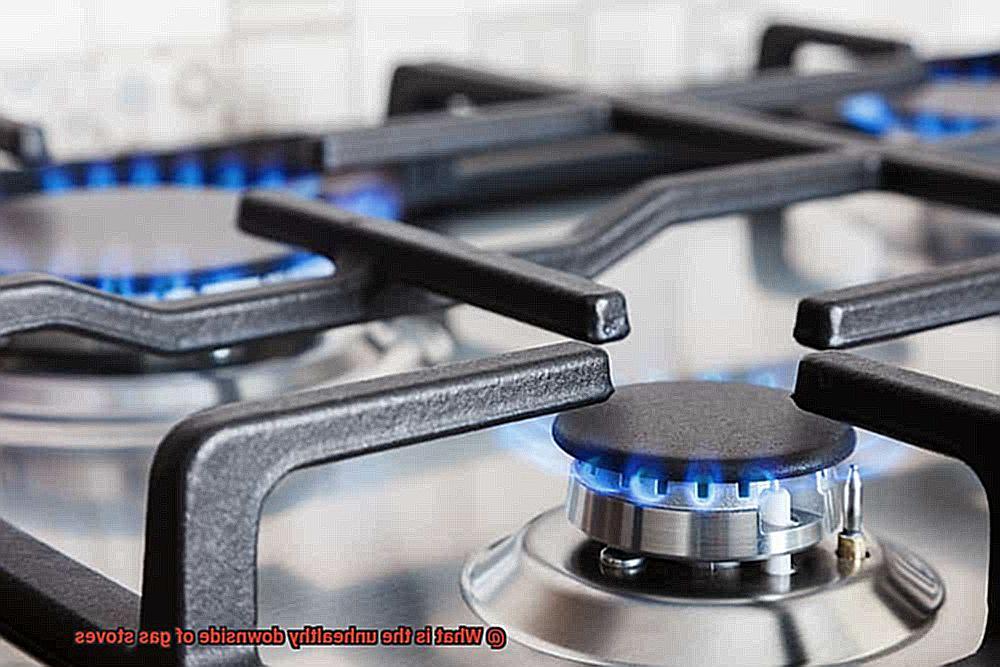
Firstly, proper ventilation is essential in the kitchen while cooking on a gas stove. Installing a range hood or exhaust fan with an adequate flow rate can effectively remove pollutants from the air. It’s crucial to ensure that the range hood is vented outside of the home to prevent pollutants from recirculating inside. Without proper ventilation, these pollutants can accumulate in your home and cause respiratory problems.
If you want to avoid indoor air pollution altogether, consider using alternative cooking methods such as electric or induction cooktops. Although gas stoves are popular for their efficiency and precision, they emit harmful pollutants into the air. Electric cooktops may be less efficient than gas stoves, but they are safer for indoor air quality. Induction cooktops use electromagnetic energy to heat the cookware directly, making them more energy-efficient and safer for indoor air quality.
Regular cleaning and maintenance of your gas stove can also reduce the emission of pollutants into the air. A dirty stove can emit higher levels of pollutants, so it’s essential to clean gas burners and grates regularly and have the stove inspected annually by a professional. Neglecting regular cleaning and maintenance can lead to an accumulation of harmful pollutants in your home.
Choosing high-quality cookware is another solution to minimize exposure to pollutants while cooking on a gas stove. Non-stick pans and pots with Teflon coatings can emit toxic fumes when heated, so it’s best to avoid using them on gas stoves. Instead, opt for stainless steel, cast iron, or ceramic cookware. These materials are safe and durable and do not emit harmful pollutants into the air.
Lastly, if you’re considering building a new home or renovating your kitchen, installing a dedicated outdoor kitchen with a gas grill or other outdoor cooking appliances is an excellent option to minimize exposure to indoor air pollutants. Outdoor cooking can be a healthier option for those who love grilling and cooking outdoors. You can enjoy the fresh air and natural surroundings while cooking your favorite meals.
LgnIR18Te5Y” >
Conclusion
In conclusion, gas stoves have long been a household favorite for their convenience and efficiency. However, recent studies have shed light on the unhealthy side effects of using these stoves. Every time you cook with gas, harmful pollutants like nitrogen dioxide, carbon monoxide, and formaldehyde are released into the air. These contaminants can lead to respiratory problems and worsen existing conditions such as asthma, all while putting your health at risk.
Not only that, but gas stoves also contribute to climate change by emitting carbon dioxide and other greenhouse gases into the atmosphere. It’s clear that this cooking method poses a significant threat to both our health and the environment.
Thankfully, there are ways to minimize these risks. Adequate ventilation in the kitchen is crucial when cooking on a gas stove. Installing a range hood or exhaust fan with an adequate flow rate can effectively remove pollutants from the air. Regular cleaning and maintenance of your gas stove can also reduce emissions.
If you want to avoid indoor air pollution altogether, consider switching to alternative cooking methods like electric or induction cooktops. Opting for high-quality cookware such as stainless steel or ceramic can also help minimize exposure to harmful substances while cooking on a gas stove.
By taking proactive measures to reduce our exposure to these harmful substances, we can ensure better health outcomes for ourselves and future generations without sacrificing our love for cooking on gas stoves.

